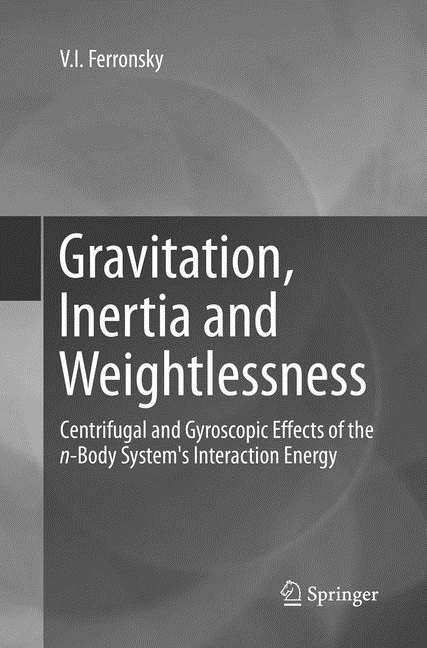Read more
This work discusses the problem of physical meaning of the three main dynamical properties of matter motion, namely gravitation, inertia and weightlessness. It considers that Newtonian gravitation and Galileo's inertia are the centrifugal effects of interaction energy of a self-gravitating n-body system and its potential field. A self-gravitating celestial body appears to be an excellent natural centrifuge that is rotated by the energy of interacting elementary particles. Weightlessness is a consequence of the centrifugal effect of elementary particles interaction that appears at differentiation of a body matter with respect to density.
The author analyzes the problem of creation of mass particles and elements from the elementary particles of "dark matter", and discusses the basic physics of the Jacobi dynamics from the viewpoint of quantum gravitation. Chapters assert that the fundamentals of Jacobi dynamics completely correspond to conditions of natural centrifuges. The centrifuge is an excellent experimental model for the study of dynamical effects in solving the many body problem. In this book, readers may follow the demonstration of some of those studies and follow derivations, solutions and conclusions that provide a solid basis for further research in celestial mechanics, geophysics, astrophysics, geo- and planetary sciences.
List of contents
Preface.- 1. Introduction: Phenomenon of Gravitation, Inertia and Weightlessness.- 2. Gravitation, Inertia and Weightlessness as the Centrifugal Effects of Interaction Energy of the n-Body System.- 3. Derivation of Unified Jacobi's Equation for Different Types of Physical Interactions.- 4. Solution of Jacobi's Virial Equation for Self-Gravitating Systems.- 5. Centrifugal Effects as the Mechanism of the Solar System Creation from a Common Gaseous Cloud.- 6. The Body's Evolutionary Processes as Effects of Interaction Energy Emission.- 7. The Unity of Electromagnetic and Gravitational Field of a Celestial Body and Centrifugal Mechanism of Its Energy Generation.- 8. Creation and Decay of a Hierarchic Body System by Centrifugal Effects of the Potential Field's Interaction Energy.- 9. Conclusions.- Index.
About the author
V.I.Ferronsky obtained his Ph.D. and Dr. Sci. in Nuclear Geophysics. He is Professor of Engineering Geology and Hydrogeology. His positions are: Assistant Professor of Dept. of Soil Mechanics in Civil Engineering Institute, Moscow (1952 –1957); Head of Laboratory of Nuclear Applications in Geology (1958 – 1965) and Deputy Director (1965 – 1970) in the Research Institute of Hydrogeology and Engineering geology, Moscow; Director of the Div. of Research and Laboratories of the International Atomic Energy Agency (1970 – 1973), Vienna; Head of the Department of Isotope Hydrology at the Institute of Water Problems of the USSR Academy of Sciences (1973 – 1983), Moscow; Director of the Div. of Research and Laboratories of the International Atomic Energy Agency (1983 – 1987), Vienna; Principal Researcher of the Paleohydrology of the Caspian Sea Project in Water Problems Institute of the Russian Academy of Sciences (1987 up to now), Moscow. His publications, which are about 300, cover Applied nuclear geophysics, Isotopy of the Earth’s hydrosphere, Celestial mechanics and Global dynamics.
Summary
This work discusses the problem of physical meaning of the three main dynamical properties of matter motion, namely gravitation, inertia and weightlessness. It considers that Newtonian gravitation and Galileo’s inertia are the centrifugal effects of interaction energy of a self-gravitating n-body system and its potential field. A self-gravitating celestial body appears to be an excellent natural centrifuge that is rotated by the energy of interacting elementary particles. Weightlessness is a consequence of the centrifugal effect of elementary particles interaction that appears at differentiation of a body matter with respect to density.
The author analyzes the problem of creation of mass particles and elements from the elementary particles of “dark matter”, and discusses the basic physics of the Jacobi dynamics from the viewpoint of quantum gravitation. Chapters assert that the fundamentals of Jacobi dynamics completely correspond to conditions of natural centrifuges. The centrifuge is an excellent experimental model for the study of dynamical effects in solving the many body problem. In this book, readers may follow the demonstration of some of those studies and follow derivations, solutions and conclusions that provide a solid basis for further research in celestial mechanics, geophysics, astrophysics, geo- and planetary sciences.

